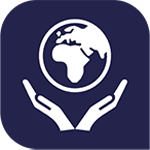
Section 1. Global developments in the field of asylum in 2021
Section 1 presents an overview of forced displacement at the global level and the need for protection worldwide. The section covers recent events and key trends and discusses the international community’s response to large refugee movements. It also presents topics which continued to gain attention in 2021. A glimpse at the broader landscape helps to set the scene for trends in asylum in the EU which unfolded in 2021
Events in 2021 and early 2022 triggered the displacement of millions of people, having a compounding effect on existing needs for protection solutions worldwide. The Taliban surge to power in Afghanistan gave thrust to new cycles of displacement within the country and across borders, in a region where displacement had already been a common occurrence. The Russian invasion of Ukraine forced millions of people to leave their homes and seek refuge in neighbouring countries. And people continued to flee existing hotspots of displacement in the Democratic Republic of the Congo, Ethiopia, Mozambique, Myanmar, South Sudan, Syria, the Sahel region, Venezuela and Yemen.
Over the past 2 years, the COVID-19 pandemic has had a complex impact on protection needs worldwide by impeding access to safety and complicating international efforts to provide effective solutions. The pandemic and public health measures aimed to curb infections highlighted the need to transition from responding reactively to adapting practices for the long term and capitalising on digital innovations and new methodologies.
The public discourse on international protection in 2021 centred around the need to scale up work in providing sustainable, durable protection solutions, including resettlement; climate-induced displacement; the gender dimension and LGBTIQ persons in situations of forced displacement; issues surrounding statelessness in the context of asylum; and questions of overall asylum governance and migration at the global level.







